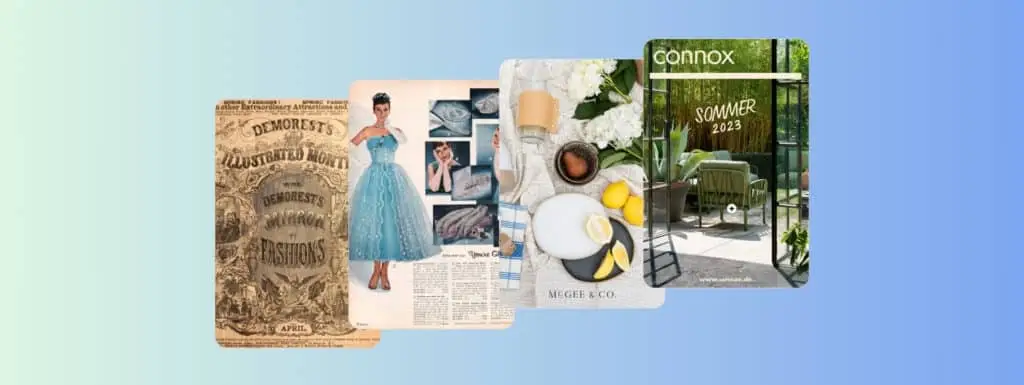For as long as we can remember, the catalog has been a vital part of the shopping experience. Catalogs are so ingrained in our daily lives that it can be easy to forget they have a very rich and interesting history.
Why was the first catalog created? What catalog trends went in and out of fashion? How did the mail order catalog industry develop?
Read on if you’d like to find out, as we present the history of mail order catalogs, including some flashbacks to great vintage material.
The first catalog ever published is (almost) medieval
It was published by Aldus Pius Manutius in Venice, 1498.
Manutius founded his company “The Aldine Press” at Venice in 1495. The invention of the printing press earlier that century made it possible for Manutius to efficiently produce the first printed editions of many Greek and Latin classics.
When he wanted to introduce his books to Venice, he printed a catalog of all the books he was printing—the first ever published catalog.
It’s almost 200 years later when …
Seed companies take the next step in catalog evolution
Even today it’s hard to find a seed company that does not offer a catalog. Just a quick online search reveals a huge list of free seed catalogs for your seed-shopping needs.
The roots of these seed catalogs lie in 1667, when the English gardener, William Lucas, published a catalog with seed prices for his customers. The trend traveled to colonial America when William Prince of the Prince Nurseries published a catalog of fruit trees in 1771.
The Prince Nursery catalogs from 1771 to their demise in 1865 are recognized as a major contribution to horticultural literature.
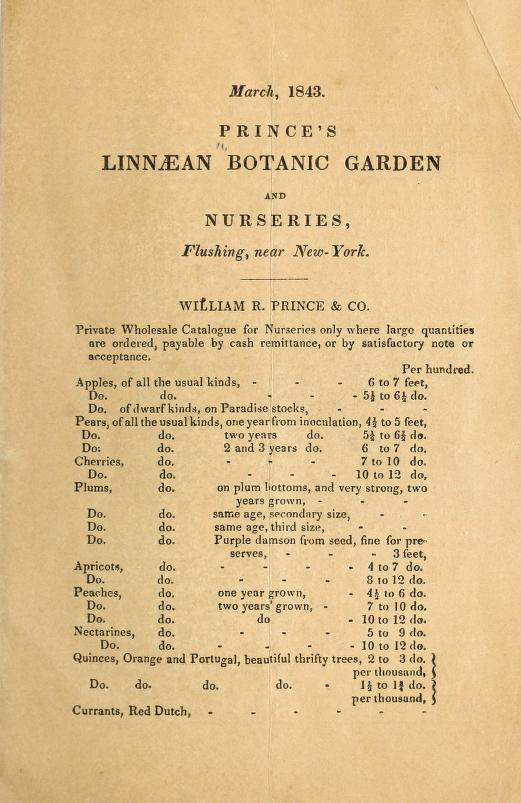
Meanwhile, another pivotal moment in catalog history takes place:
Benjamin Franklin invents the mail-order concept
Most people might know Benjamin Franklin for his Kite experiment, or the invention of the Lightning rod. But in 1744, he also invented the mail order business.
Franklin published “A Catalogue of Choice and Valuable Books, Consisting of Near 600 Volumes, in most Faculties and Sciences”. On the opening page of the catalog, the terms of sale for the books he offered, are clearly described:
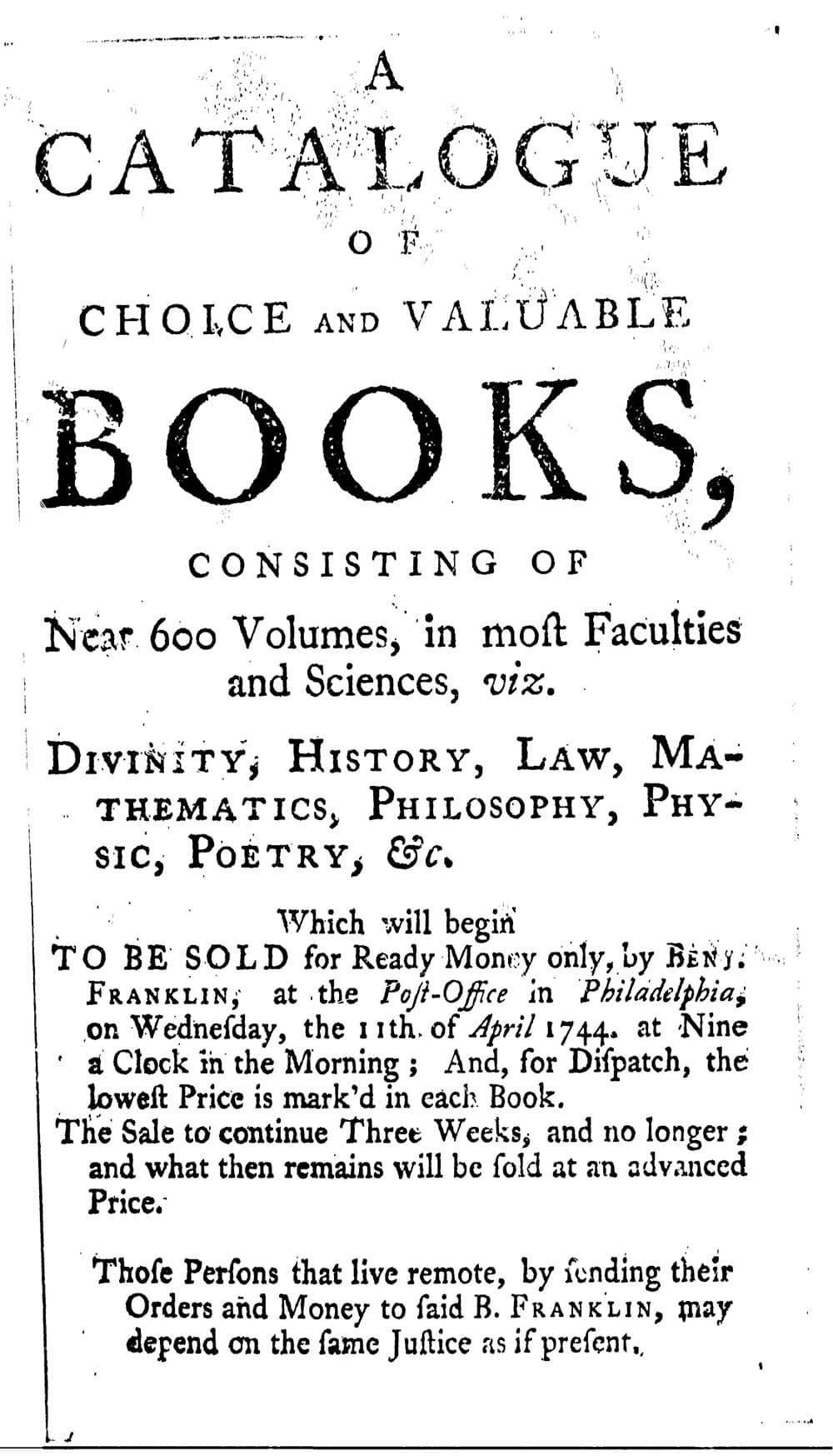
Most notably, Franklin made it possible for people to purchase his books without visiting the shop: “Those Persons that live remote, by sending their Orders and Money to said B. Franklin, may depend on the same Justice as if present.”
Franklin paved the way for the businesses that would follow:
The first mail-order catalogs
It’s around the 1830s that mail order catalogs became more commonly accepted. And according to Wendy Woloson “The first enterprises to embrace mail order in the modern sense were seedsmen and nurserymen.”
To get a sense of vintage catalog design, a quick search on Pinterest reveals a great collection of vintage seed catalogs. They are very interesting to browse through if you like a peek in the past.
A notable early mail order catalog that’s still running today, is Tiffany & Co’s Blue Book, first published in 1845:

And in 1861, Pryce-Jones was one of the first to sell catalogs by mail order on a large scale. Starting out as a shop assistant, he went on to become a multi-millionaire responsible for 4,000 workers and 250,000 customers.
According to historian David Pugh “He supplied Queen Victoria with her underwear—it was a piece of woven flannel that was very soft.”
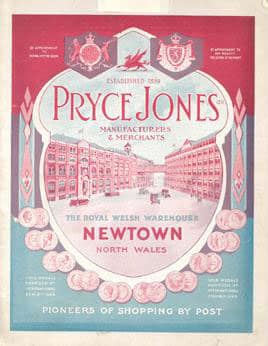
Another example of an early mail order catalog is that of Mme. Demorest. She promised to ship anything from a pin to a piano.
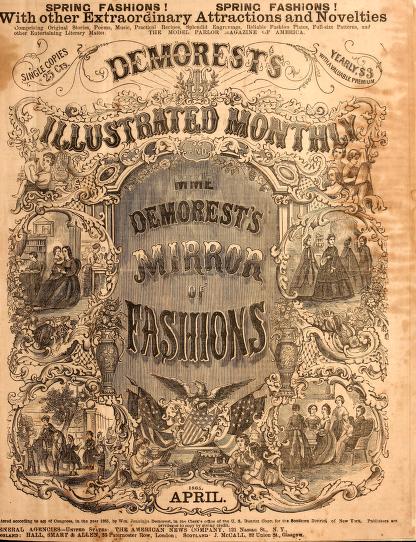
The modern mail-order industry
If you’re totally in love with catalogs, then the 18th of August is a time to celebrate, as it is National Mail Order Catalog Day.
Why? The first Montgomery Ward catalog was produced on August 18, 1872. And while many businesses were already publishing mail order catalogs, it was Aaron Montgomery Ward that is credited for producing the first mail order catalog meant for the general public. By 1904, 3,000,000 customers were on the catalog mailing list.
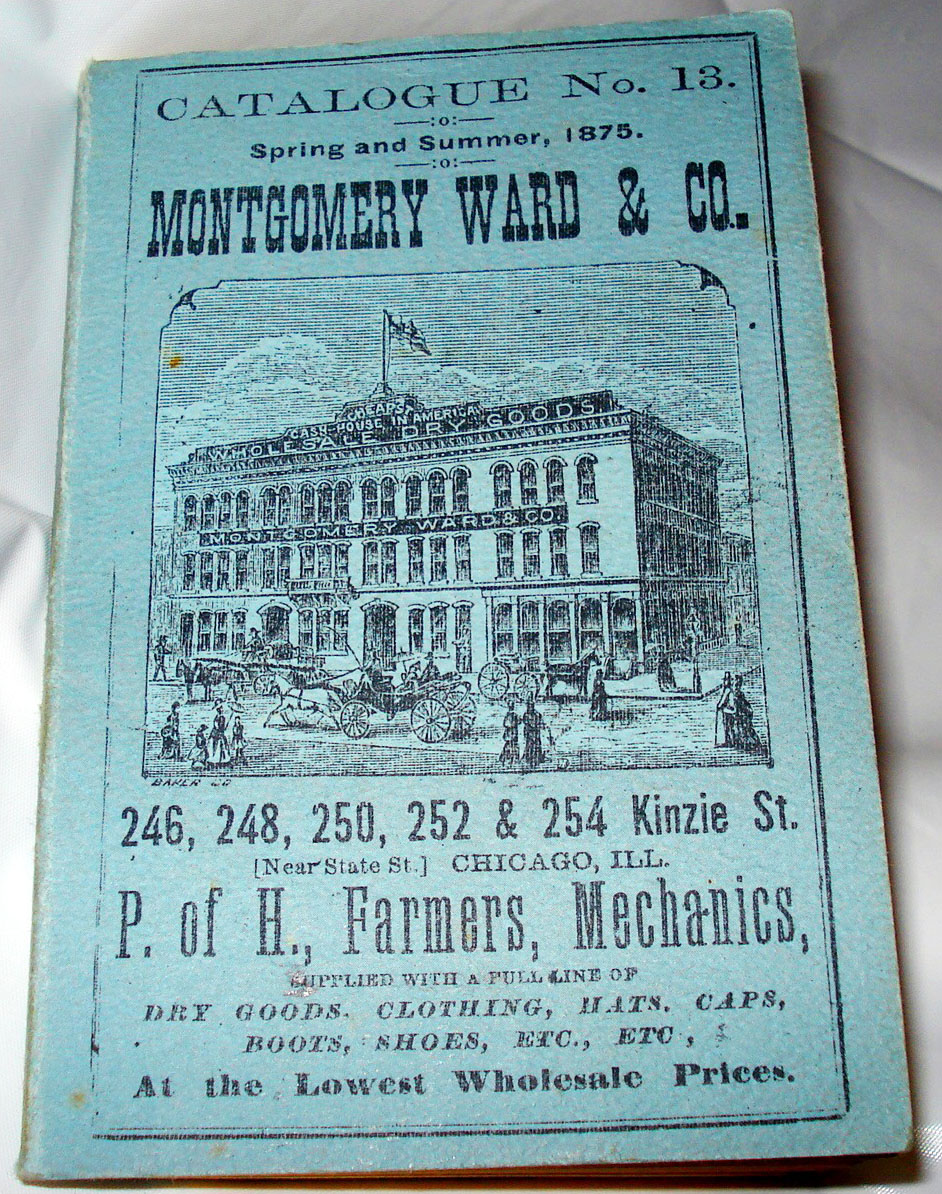
Not much later, another large player entered the mail catalog field. Established by Alfred Hammacher in New York City in 1848. Hammacher Schlemmer published its first catalog in 1881.
As they’re one of the earliest still surviving mail order catalog companies, we’re proud to have Hammacher Schlemmer as our customer here at Publitas. We help them publish modern digital catalogs online and you can find their latest catalog here.
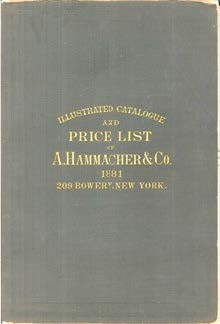
Because of it’s success, the mail order concept was spreading like wildfire. Richard Sears published the first Sears, Roebuck and Co. catalog in 1894. On the cover of one of their earliest catalogs he declared Sears the “Cheapest Supply House on Earth”.
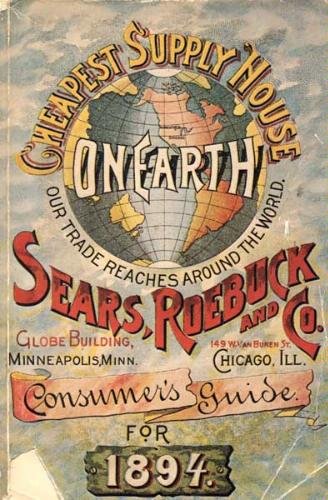
Starting in 1933, the annual Sears Christmas catalog would become an American icon:
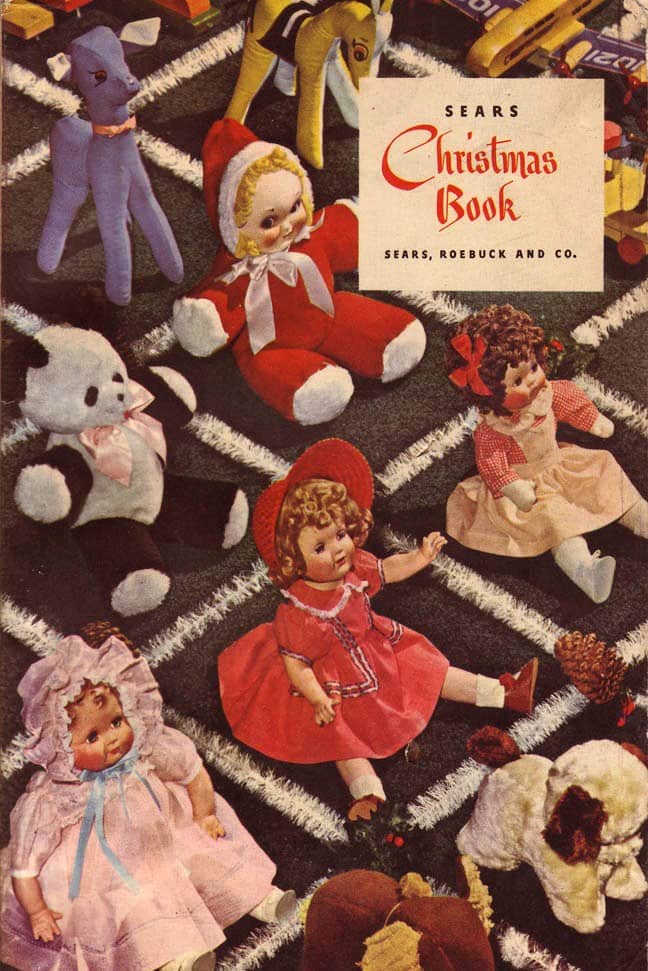
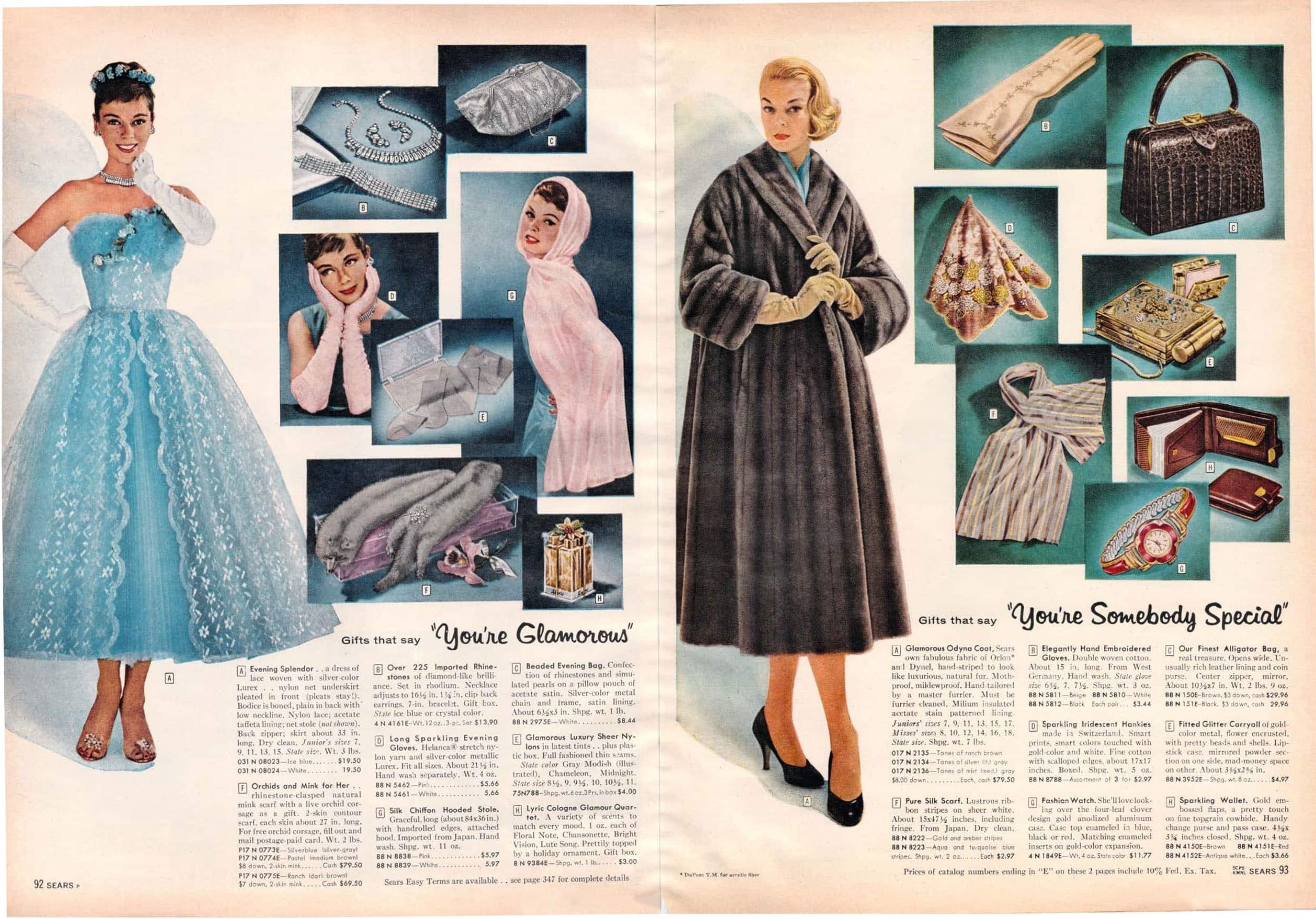
The rise of the shopping mall and complimentary catalogs
Post World War II, the population in the U.S. suburbs rose quickly and a new age of consumerism had started. As Lizabeth Cohen writes: in the second half of the 20th century, shopping malls became a new kind of community for scattered suburb-dwellers.
It was during this period—in 1963—that J.C. Penney launched their first catalog. While traditional mail order companies only had catalogs to go by, J.C. Penney was one of the first to use the catalog as a supplementary channel. J.C. Penney made it possible to order from their catalog while visiting their physical stores.
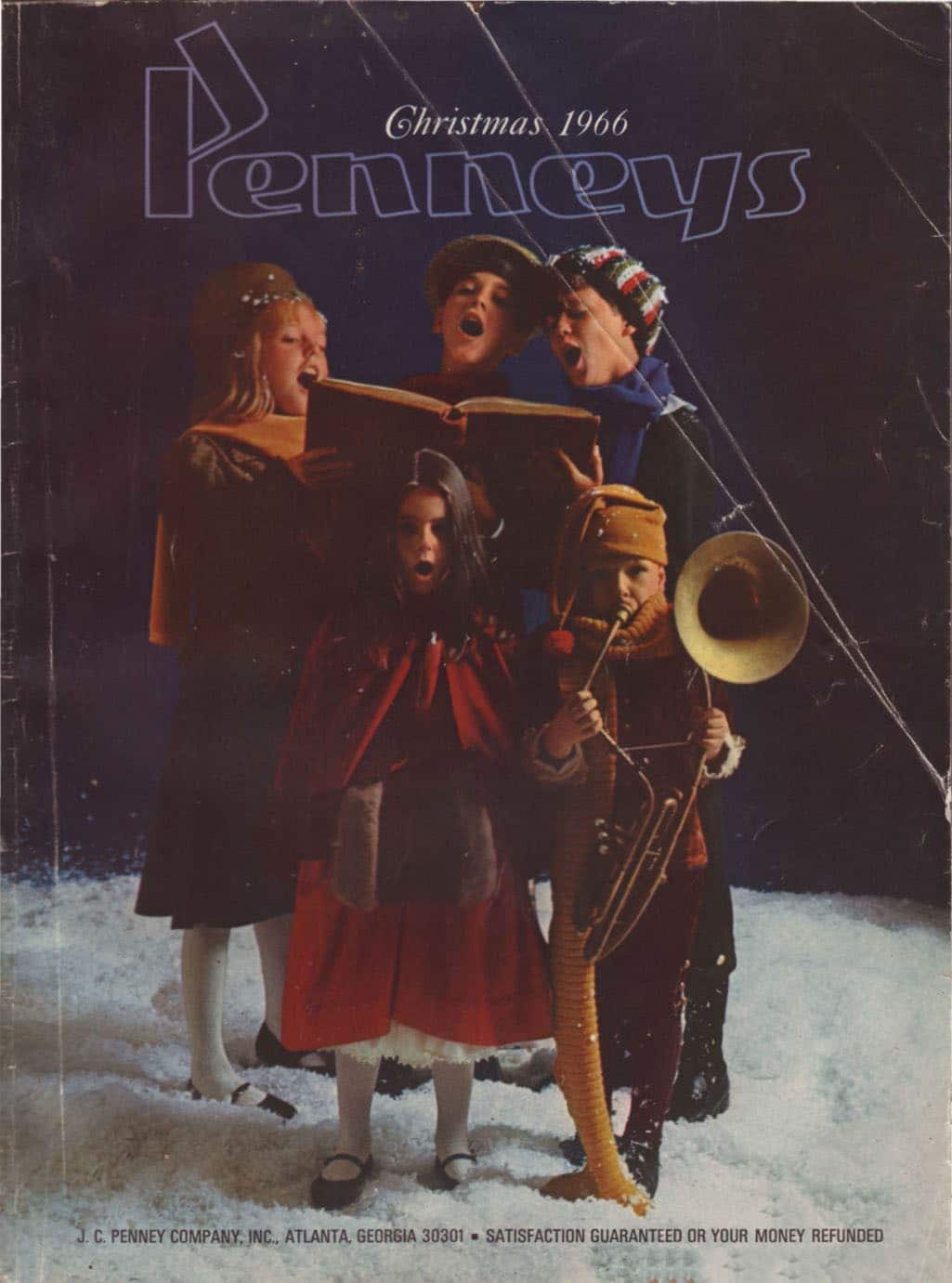
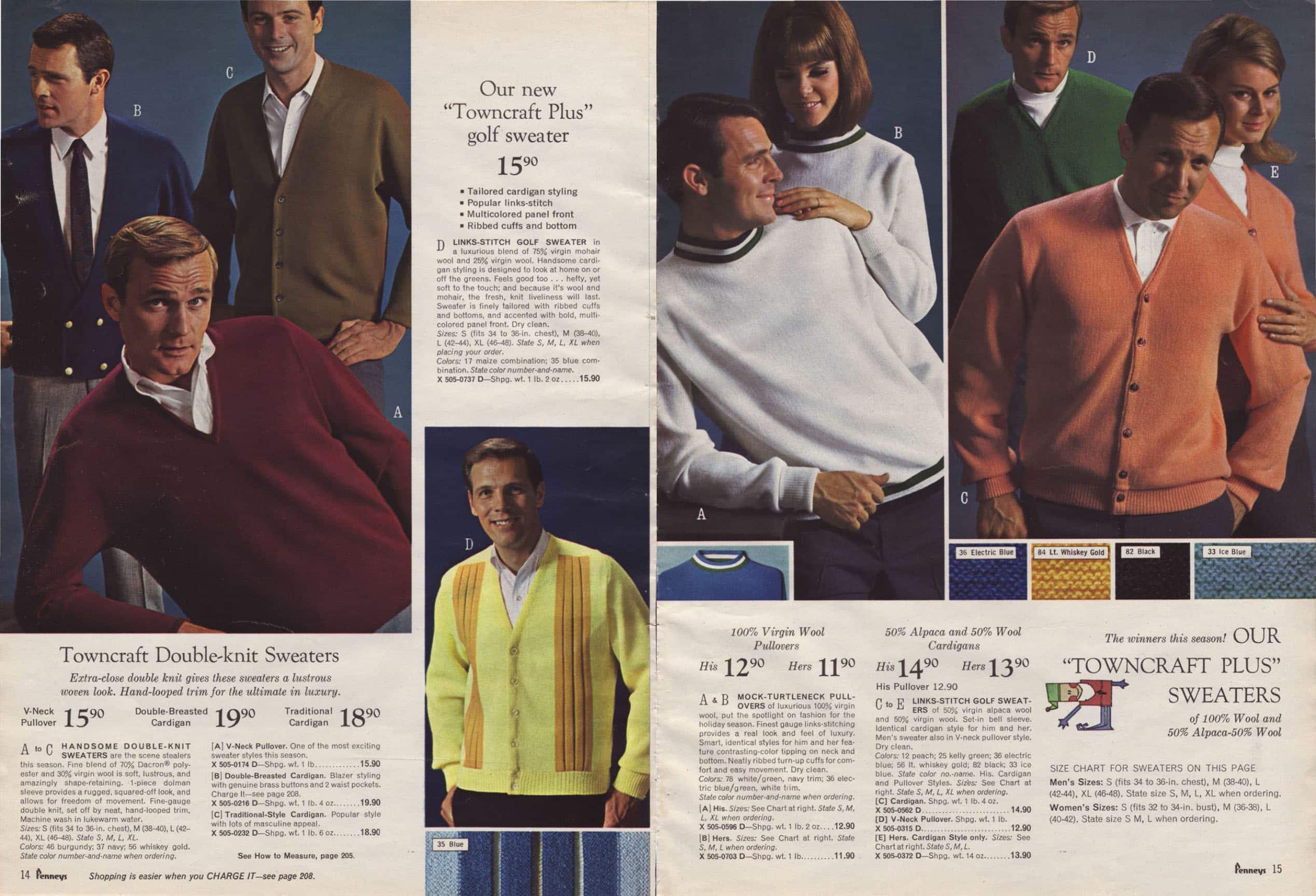
For years to follow, the catalog was one of the main tools of direct advertising. Many companies expanded their business through catalogs. For example, in 1982, catalog sales for Victoria’s Secret accounted for 55% of their $7 million annual sales.
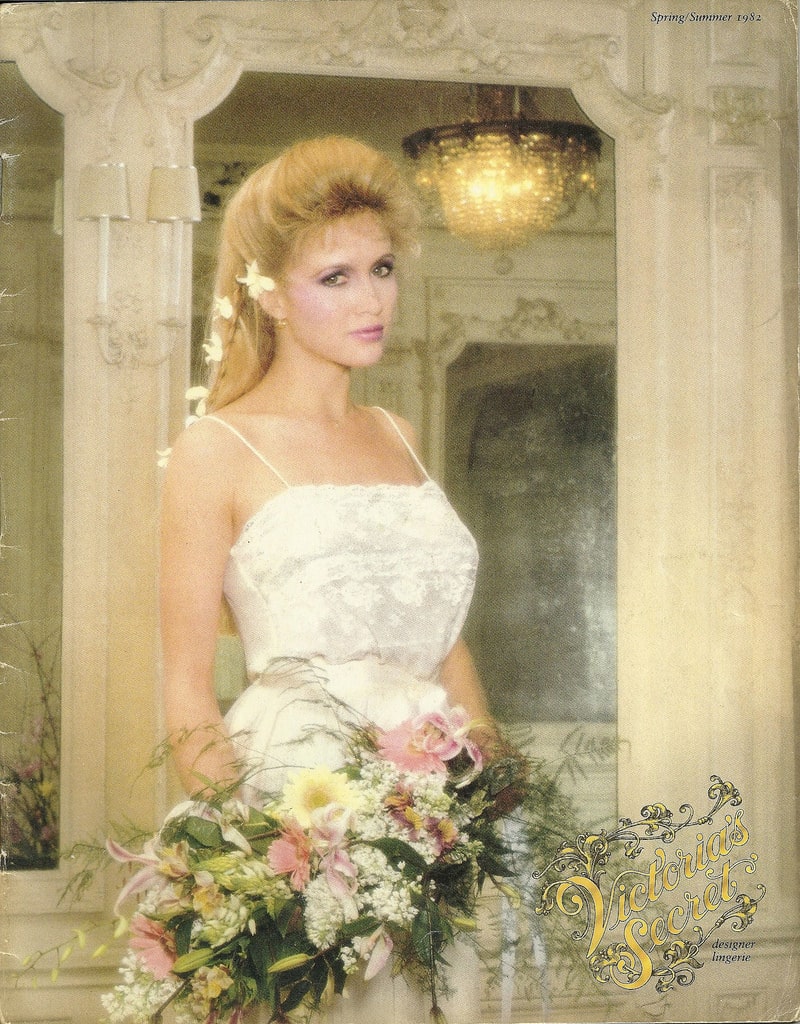
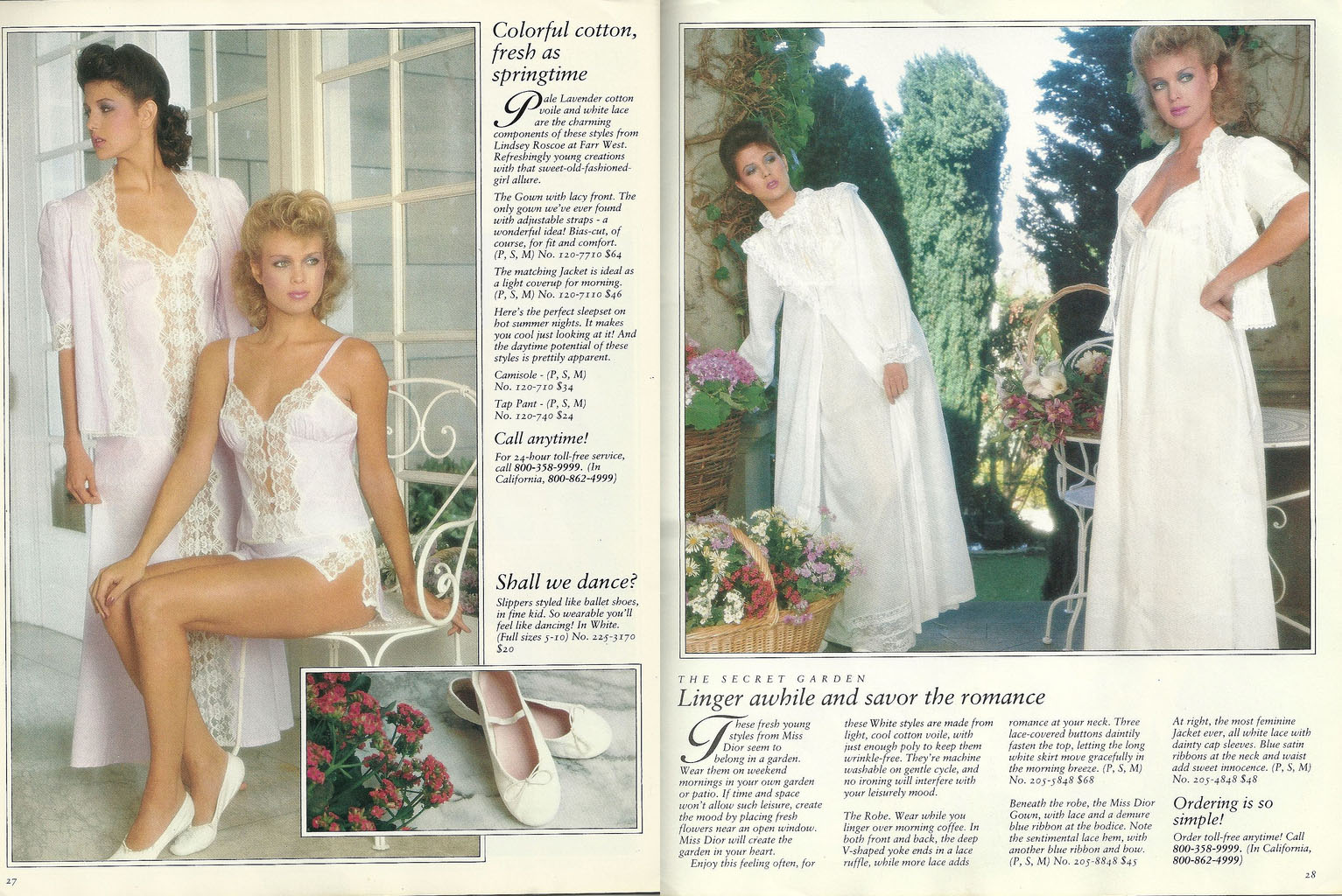
Another example is the J.Crew Group, reporting an explosive growth of 25 to 30 percent a year throughout the mid-1980s.
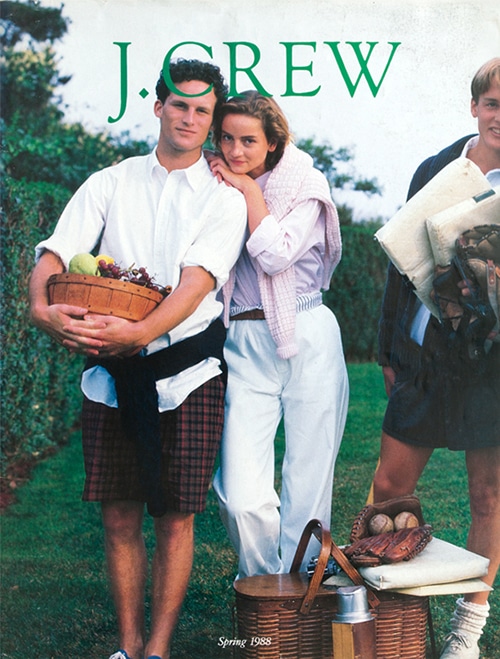
After a rapid decline, catalogs still promise to be a valuable channel
According to the Direct Marketing Association, the number of catalogs mailed peaked in 2007. Then, the Great Recession caused retailers to slice catalog budgets. Simultaneously, the rise in online sales and marketing made print seem redundant.
However, the DMA emphasizes that print is not dead. Here are some interesting statistics from their report about catalogs:
- 30% of people polled reported that a catalog recently drove them online to shop;
- People found catalogs the most interesting type of standard mail – even surpassing newspapers and magazines by 31%;
- There has been a 23% increase in overall response, despite the 4.5% decrease in catalogs mailed.
They summed the modern catalog up as being “a standout engagement tool, a brand-enhancer and a mighty push online.”
This is much in line with what we wrote in earlier posts about the catalog:
- The Online Catalog as a Source of Inspiration: 7 Great Examples of Visual Storytelling
- Online Shoppable Catalogs: Where Do They Fit in Your Customer’s Shopping Journey?
One great example of a modern catalog is this fall’s mail order catalog from Billabong.
Vintage inspiration
Digging into vintage mail-order catalogs and businesses was interesting and enjoyable. It has helped us to gain a better understanding of the catalog and its history. Hopefully, you find this post as enlightening and enjoyable as we do.
And on a final note, if you’re looking for more vintage inspiration or nostalgia, here are some of the awesome sources we found:

